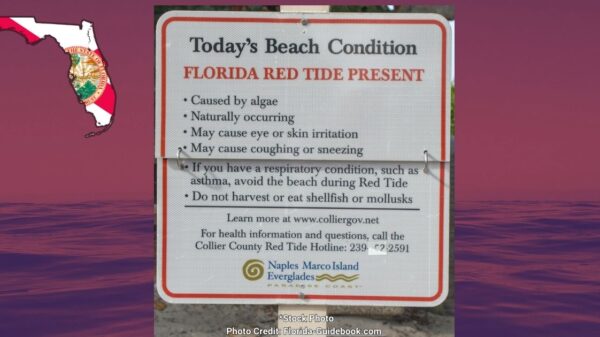This week, U.S. Reps. Neal Dunn, R-Fla., and Darren Soto, D-Fla., showcased a letter they sent to U.S. Commerce Sec. Gina Raimondo about red snapper data.
“Fishing is a critical part of Florida’s economy, and red snapper fishing is essential to the Panhandle’s economy,” said Dunn. “Thanks to the independent research through the Gulf of Mexico Red Snapper Count, the absolute abundance of red snapper in the U.S. Gulf of Mexico was estimated at 110 million fish, which is three times more than the federal government’s estimate. This data, combined with the state management of the fishery is great news for the state of Florida and our fishing community.”
“By ensuring we have an accurate count of red snapper in the Gulf, we are investing in a critical industry that keeps our state moving forward,” said Soto. “We must support our Florida anglers on the federal level by permitting the use of multiple data points to improve the Gulf’s red snapper season and support Florida’s fishing industry.”
Almost every member of the Florida U.S. House delegation signed the letter which has the support of the Florida Ports Council.
“Florida’s seaports play a vital role in shipping exports that help feed the world, and that includes fishery food products. Accurate red snapper data is vital to the sustainability of this important food product, as well as the sustainability of Florida’s blue economy,” said Mike Rubin, the CEO and president of the Florida Ports Council.
“Fishing for red snapper is a daily revenue generator for America’s small businesses. Charter captains, bait shops, hotels, restaurants, towns, and counties are the beneficiaries of the thousands of anglers who enjoy fishing for red snapper. This new framework would appropriately increase the quota for Gulf of Mexico anglers and stimulate the economy. Accurate data means more fishing for the panhandle,” Dunn’s office noted.
In recent weeks, U.S. Rep. John Rutherford, R-Fla., has been pushing the “Red Snapper Act.”
Rutherford first introduced the bill at the end of last year with more than a dozen co-sponsors being led by then U.S. Rep. Stephanie Murphy, D-Fla. The bill “would prevent the National Oceanic and Atmospheric Administration (NOAA) from implementing area closures in the South Atlantic until the South Atlantic Great Red Snapper Count study is complete and the findings are integrated into the fishery’s stock assessment.” At the start of last month, Rutherford reintroduced the bill.
Rutherford’s office explained why the congressman offered the proposal.
“Recreational fishing in Florida is a major economic driver that produced $9.2 billion in economic output and supported 88,501 jobs in 2020. Over the last 10 years, the South Atlantic fishing community has worked hard to rebuild the red snapper stock. However, due to a lack of good data, seasons remain short and fail to reflect the real number of red snapper in the region. To fix this, Congress appropriated $5.1 million over the last three years to fund the South Atlantic Great Red Snapper Count, which will deliver reliable data on abundance, genomics, and mortality and improve access to red snapper fishing for anglers,” Rutherford’s office noted.“Earlier this year, NOAA proposed closures for all bottom fishing in the South Atlantic in an effort to decrease the red snapper caught outside of the two-day recreational season. While the South Atlantic Fishery Management Council ultimately rejected NOAA’s proposal, the threat of future closures persists. The Red Snapper Act would prevent NOAA from making future sweeping management decisions until the ongoing South Atlantic Great Red Snapper Count is complete.”


















